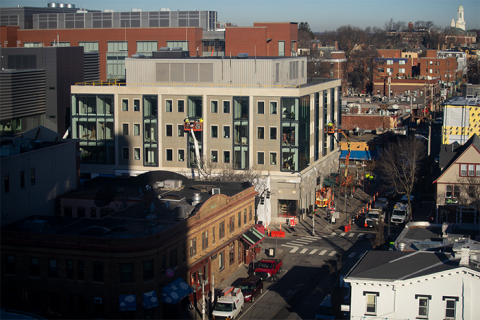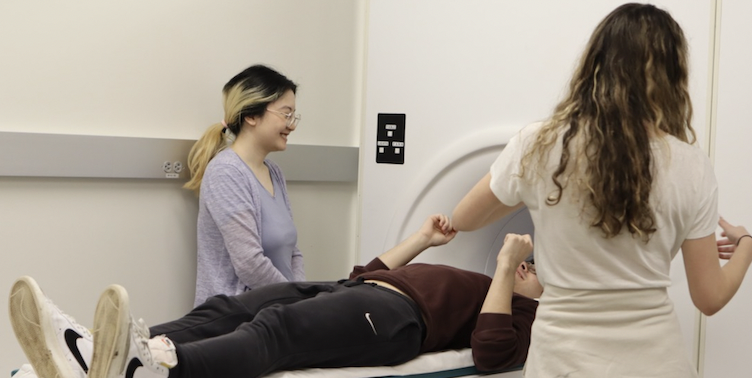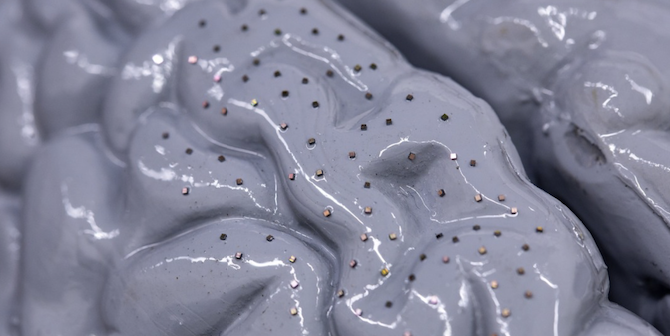Carney opens a new home for innovation and impact in brain science

Two decades ago, the Brown Brain Science Program was born through a pioneering grant from the Burroughs Wellcome Fund, supporting graduate students with expertise in the physical sciences and mathematics to tackle problems in brain science. That program grew into the Brown Institute for Brain Science in 2009, which became in 2018 the Robert J. and Nancy D. Carney Institute for Brain Science.
I’ve been at Brown since 2005, saw the transition from program to institute, and I’m excited to now see the Institute transitioning to a new physical space that will embody what we’ve strived to do for the brain science community over more than a decade. We’re leaping ahead two centuries, moving from an 1800s Victorian building on Stimson Avenue to renovated space in 164 Angell Street above the Brown University Bookstore (space formerly known as the Brown Office Building).
This new space at the center of Brown’s College Hill campus will be the “town square” for brain science at Brown, providing common space where researchers from across Carney-affiliated departments can share ideas and pursue innovative projects. In addition to housing the fantastic team that runs the Institute, 164 Angell will also be home to four laboratories from three departments pursuing computational neuroscience, human brain recording and decoding, and neuroengineering – more than 40 faculty, students, postdocs, and other researchers, as well as their collaborators. And the Data Science Initiative and the Center for Computational Molecular Biology will sit just one floor below us; we’re looking forward to opportunities to collaborate with these groups.
As we get settled into the space, we’ll be rolling out programs and activities to engage other members of the community. For instance, the space includes an innovation zone that can be arranged flexibly to hold small lectures, workshops, hackathons, and more. Among other activities, we’ll be launching a series of data workshops so that students can get up to speed on machine learning and other computational methods that will enable their research.
A major priority for the Carney Institute is ensuring that research within the Institute has maximum impact. That means getting our research out of academia and into the world, by forming a startup, licensing intellectual property to a company, distributing research tools through a non-profit, or providing guidance to policy makers. We’ll be using 164 Angell as a place where we can bring diverse teams of experts together to tackle big problems, and support them through inception of projects, identifying early funding, and moving them towards societal impact. We’ll also be engaging foundations and companies to get their support and expertise to help us bring brain science discoveries to the world.
Impact also means making sure that we don’t just train excellent scientific thinkers but also that budding scientists leave Brown with the additional skills necessary for current and future jobs in science. We’ll be using space at 164 Angell to bring together students and postdocs from across departments and programs affiliated with Carney for training workshops and other activities to augment their research experience.
Through our new home in 164 Angell we’re aiming to transform how the Carney Institute impacts brain science at Brown, and in turn how brain science at Brown impacts the world.
R. John Davenport is the managing director of the Robert J. and Nancy D. Carney Institute for Brain Science.



